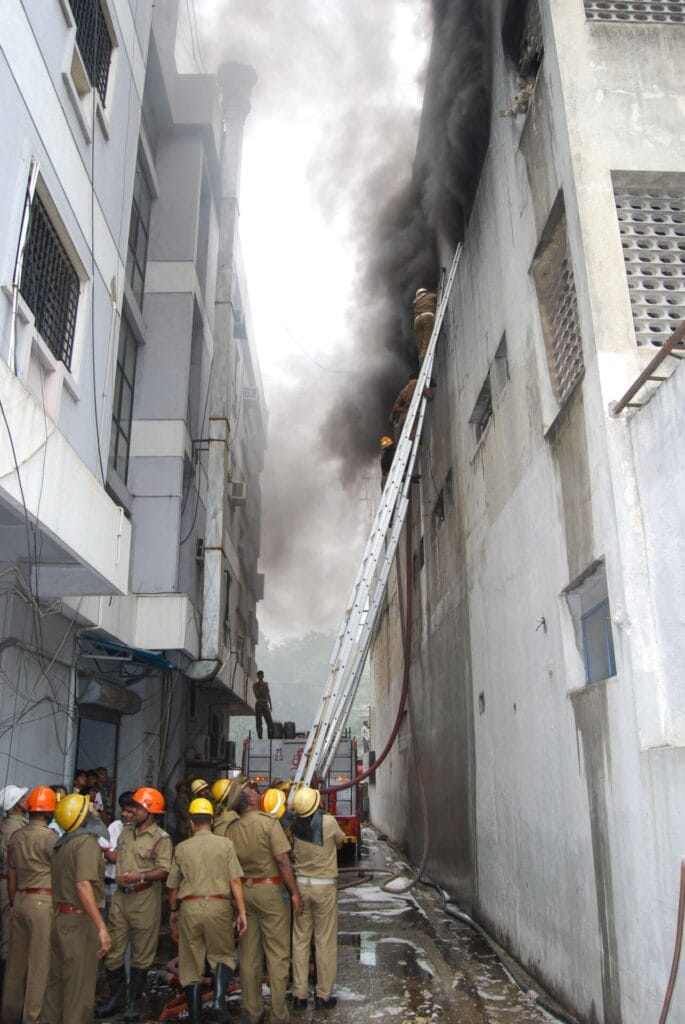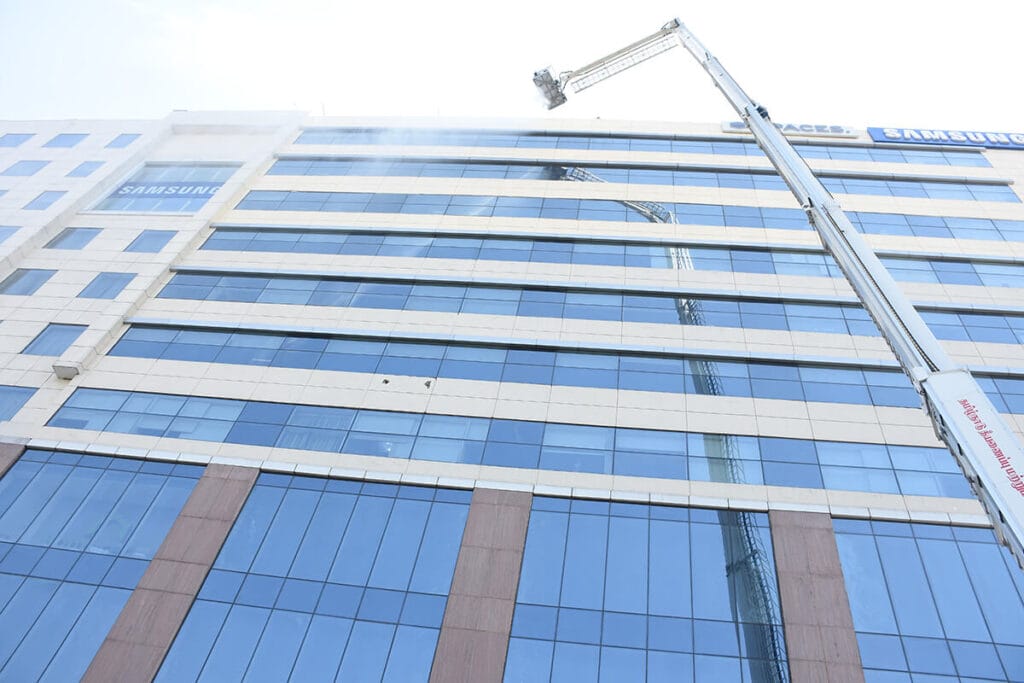As the city continues to grow and evolve, so does the need for robust fire safety preparedness. Chennai has had its fair share of fire accidents, claiming lives and gutting properties. This Diwali weekend, the fire department received more than 100 calls, most of them for minor incidents.
According to the data from the Tamil Nadu Fire and Rescue Services, there has been a noticeable uptick in fire mishaps over the past few years. In 2022, Tamil Nadu recorded over 19,206 fire-related emergencies, and 67 lives lost to fire hazards. Property worth 29.76 crores was lost, underlining the financial impact of fire incidents on both individuals and businesses.
The city’s fire safety department has initiated extensive awareness campaigns to educate residents and businesses on fire safety practices, including fire drills, proper use of firefighting equipment and evacuation procedures.

Pic: Gallery/Tamil Nadu Fire & Rescue Services
Fire safety initiatives in Chennai
Awareness programmes are planned throughout the year with a special focus on the Diwali festival. These initiatives include rallies, marathons and comprehensive programmes in educational institutions. “Two days before Diwali, the department mobilises manpower and vehicles, positioning them in vulnerable areas of the city. This approach aims to ensure a rapid response to any fire-related incidents during the festival. Fire teams are positioned strategically, so that response time is reduced and emergencies are swiftly tackled,” says N Priya Ravichandran, Joint Director, Tamil Nadu Fire & Rescue Services.
In case of fire emergencies, the public is encouraged to call 112, an integrated emergency response system that includes the fire department. The control room, equipped with GPS systems, directs the nearest vehicle to the scene, continuously monitoring the situation. This coordination involves collaboration with other departments, such as Metro Water, for additional resources, she adds.

How to apply for an NOC for fire safety for your building
The process to obtain a No Objection Certificate (NOC) for fire safety in multi-storied buildings in the city involves the preparation of required documents, such as a signed application, filled Appendix 1 & 2, and detailed building plans. Applicants can access these application forms and guidelines on the official website of the Fire and Rescue Services Department, where they must accurately complete and submit the forms, awaiting a thorough review.
If necessary, an inspection may be scheduled, during which the applicant should be prepared to present specific documents outlined in Annexure-I and II. Successful completion of this process results in the issuance of an NOC, marking compliance with essential fire safety standards and contributing to the overall safety of the building and its occupants.
Read more: With 33 fire stations and modern equipment, fire safety in Chennai still a far cry

Measures to ensure your building is fire–safe
As Chennai is a major city in India with a substantial number of buildings, including residential, commercial, and industrial structures it is important to prioritise and ensure safety from fire hazards in buildings. Urban environments with a high concentration of buildings face increased risks of fire incidents due to factors such as population density, diverse building uses and various potential ignition sources.
Some of these measures include:
Fire detection systems: Have smoke detectors, heat detectors and fire alarms installed in your apartment or commercial space. These devices can quickly detect the presence of a fire and alert occupants, allowing them to evacuate quickly and safely.
Fire suppression systems: Install suppression equipment such as sprinklers, which can help control or extinguish a fire before it spreads.
Emergency exits and evacuation plans: Ensure buildings have clearly marked emergency exits and well-defined evacuation plans. Conduct regular drills to familiarise occupants with evacuation procedures.
Fire-resistant construction materials: Use fire-resistant materials in building construction. This includes fire-resistant doors, walls, and windows to prevent the rapid spread of fire.
Electrical safety: Ensure that electrical systems are installed and maintained properly to prevent electrical fires. Avoid overloading circuits and use certified electrical components.
Training and education: Educate building occupants about fire safety protocols and procedures. This includes training on the proper use of fire extinguishers and other fire-fighting equipment.
Read more: Is the building you are standing in now, fire-safe?
Regular inspections and maintenance: Conduct regular inspections of fire safety equipment, such as fire extinguishers, alarms, and sprinkler systems. Ensure that all systems are in working order and meet relevant standards.
Limiting fire hazards: Identify and address potential fire hazards within the building, such as flammable materials, faulty wiring or improper storage of combustible substances.
Emergency services access: Ensure that emergency services have clear access to the building. This includes keeping fire hydrants unobstructed and providing clear pathways for emergency vehicles.
Residents should be aware of the latest advancements in fire safety technologies and regulations and regularly update safety plans based on changes in occupancy or building use.